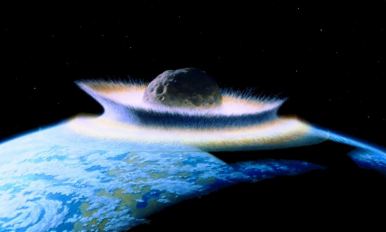The Mountain Mystery. tells the story of how (most) geologists and geophysicists finally agreed that plate tectonics moves the continents, opens ocean basins, and scrunches crust into mountains. But what started the tectonic motion? Most of us assume that the scheme kicked into action about three billion years ago as a result of temperature differentials – the lower mantle was (and is) hotter than the near-surface. As heat dissipated, convection currents began.
We are fairly certain today that convection is moving the continents. As Robert Dietz wrote in “Continent and Ocean Basin Evolution” in 1963:
“Thermal convection cells in the mantle provide the fundamental driving force and the mid-ocean rises mark their divergence while the continents tend to lie over the convergences. . . The principle novelty of this concept is that no fixed layer separates the sea floor from the convection process; rather the ocean bottom is the exposed and outcropping limb of this convection. Although perhaps alarming at first thought, seafloor spreading is an orderly, evolutionary and actualistic process consonant with geologic history.”
The bold lettering is mine, added to be sure you noticed what Dietz is saying – the ocean crust is part of the moving convection cell. Dietz calls this alarming. Creepy is another good word. His thesis – sometimes called the “Commotion in the Ocean” paper – followed Harry Hess’s work and generally spoke the same words regarding spreading seafloor and mobile crust.
But is it necessary to have convection currents dissipating the Earth’s primordial heat? Lord Kelvin didn’t think so. And he made life unbearably difficult for his long-suffering assistant and junior professor, John Perry, who disagreed with him. Perry tried to convince the Lord of the possibility of mantle convection currents. Lord Kelvin believed the planet was solid to the core and nothing inside flowed. He had calculated that Earth cools only through conduction and his math showed the planet has been cooling since it formed 20 million years ago. That’s right – 20 million years. That’s almost as wrong as 6,000 years. In 1900, when Kelvin was tossing Perry out of his office (because Perry had published in Nature that the Earth is over a billion years old and the mantle dissipates heat via convection), Kelvin stubbornly refused to entertain anything close to a billion years as even remotely possible. Kelvin insisted the planet lost heat through conduction alone and his calculations arrived at something around 20 mya, based on the planet’s rate of heat loss.
Kelvin may have been right about conduction, except he got the planet wrong. Mercury and Mars likely lost their primordial heat mostly through conduction. Not so with planet Earth. The mantle moves, and it seems it has been in motion for a long time.
 A recent article in Astrobiology Magazine reports tectonics may have been kickstarted by a 50-kilometre-wide space rock that crashed into what we now call South Africa. This is according to Donald Lowe and Norm Sleep who published their thoughts in the journal Geochemistry, Geophysics, and Geosystems. Their paper, “Physics of crustal fracturing and chert dike formation triggered by asteroid impact, ∼3.26 Ga, Barberton greenstone belt, South Africa.” alleges that the asteroid locally fractured the primitive crustal plate. Others have pointed out that the Late Heavy Bombardment era, as that time in Earth’s history was called, experience a lot of ‘heavy bombardments’ all of which helped break up the plates – perhaps into today’s known pieces. Would the plates arisen and then moved from convection alone, or was the bombardment a necessary prerequisite? Or was the bombardment simply coincidental to the beginning of crustal mobility? Do we know?
A recent article in Astrobiology Magazine reports tectonics may have been kickstarted by a 50-kilometre-wide space rock that crashed into what we now call South Africa. This is according to Donald Lowe and Norm Sleep who published their thoughts in the journal Geochemistry, Geophysics, and Geosystems. Their paper, “Physics of crustal fracturing and chert dike formation triggered by asteroid impact, ∼3.26 Ga, Barberton greenstone belt, South Africa.” alleges that the asteroid locally fractured the primitive crustal plate. Others have pointed out that the Late Heavy Bombardment era, as that time in Earth’s history was called, experience a lot of ‘heavy bombardments’ all of which helped break up the plates – perhaps into today’s known pieces. Would the plates arisen and then moved from convection alone, or was the bombardment a necessary prerequisite? Or was the bombardment simply coincidental to the beginning of crustal mobility? Do we know?
Read the book, The Mountain Mystery.
Pingback: Melting | Bad Beekeeping Blog
I enjoyyed reading this
LikeLike